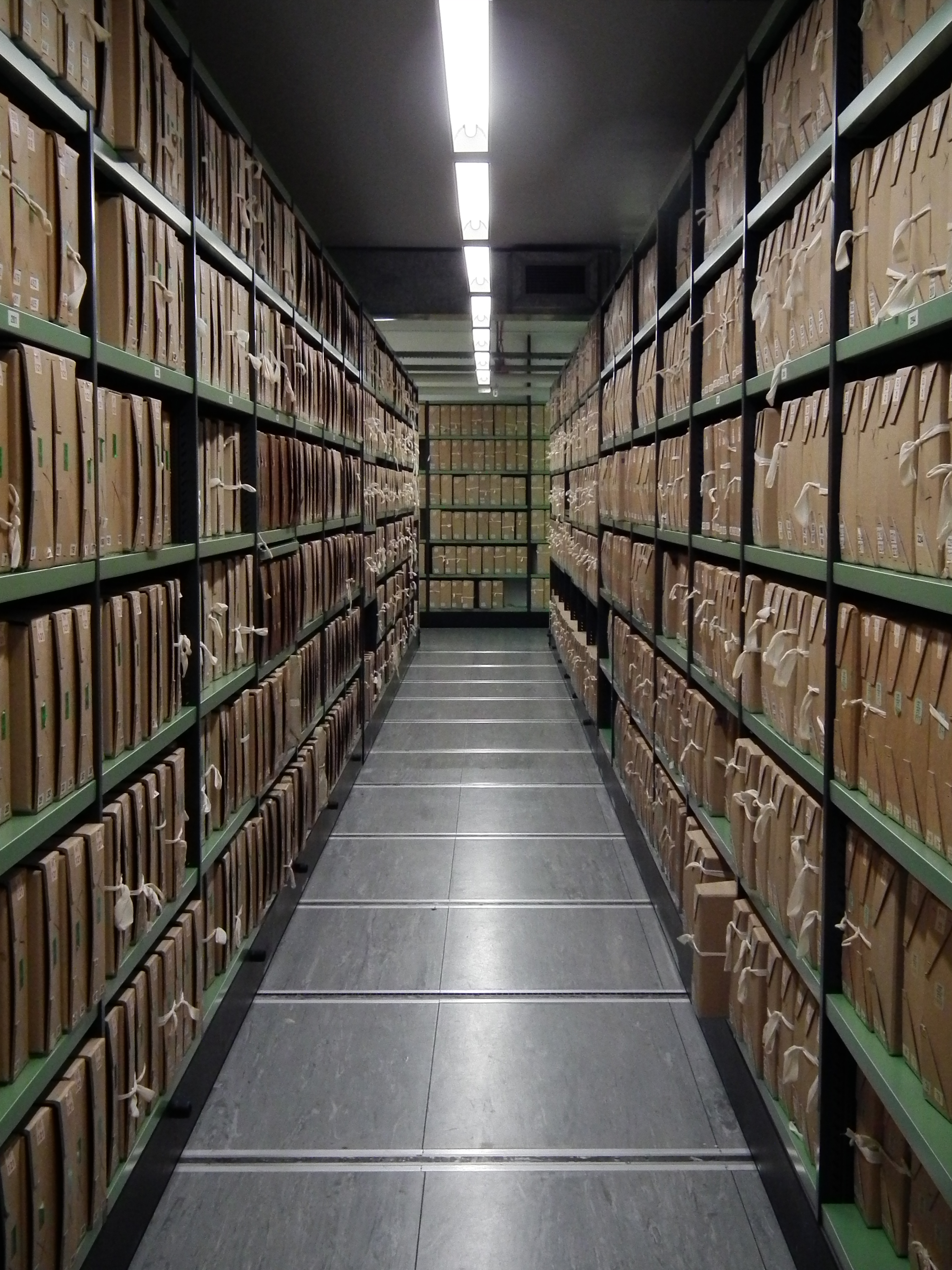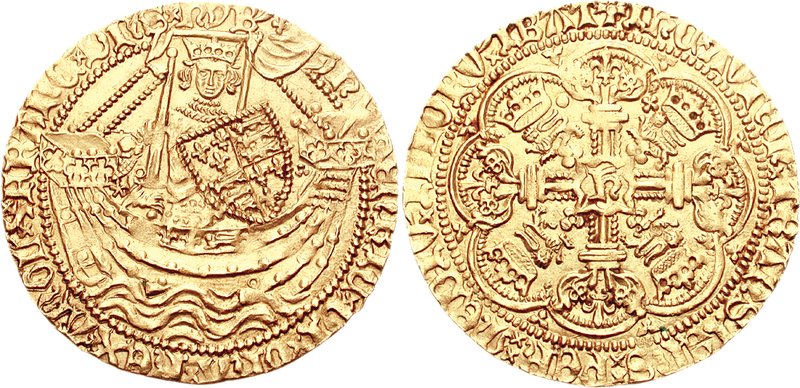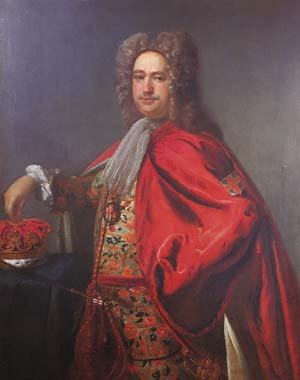|
Garter King Of Arms
Garter Principal King of Arms (also Garter King of Arms or simply Garter) is the senior king of arms and officer of arms of the College of Arms, the heraldic authority with jurisdiction over England, Wales and Northern Ireland. The position has existed since 1415. Garter is responsible to the Earl Marshal for the running of the college. He is the principal adviser to the sovereign of the United Kingdom with respect to ceremonial and heraldry, with specific responsibility for England, Wales and Northern Ireland, and, with the exception of Canada, for Commonwealth realms of which Charles III is the sovereign. He also serves as the king of arms of the Order of the Garter and his seal and signature appear on all grants of arms made by the college. On the death of the British monarch it is Garter's duty to proclaim the new monarch. Initially, the Accession Council meets at St James's Palace in central London to declare the new monarch from the deceased monarch's line. Once the new ... [...More Info...] [...Related Items...] OR: [Wikipedia] [Google] [Baidu] |
Coat Of Arms
A coat of arms is a heraldry, heraldic communication design, visual design on an escutcheon (heraldry), escutcheon (i.e., shield), surcoat, or tabard (the last two being outer garments), originating in Europe. The coat of arms on an escutcheon forms the central element of the full achievement (heraldry), heraldic achievement, which in its whole consists of a shield, supporters, a crest (heraldry), crest, and a motto. A coat of arms is traditionally unique to the armiger (e.g. an individual person, family, state, organization, school or corporation). The term "coat of arms" itself, describing in modern times just the heraldic design, originates from the description of the entire medieval chainmail "surcoat" garment used in combat or preparation for the latter. Roll of arms, Rolls of arms are collections of many coats of arms, and since the early Modern Age centuries, they have been a source of information for public showing and tracing the membership of a nobility, noble family, a ... [...More Info...] [...Related Items...] OR: [Wikipedia] [Google] [Baidu] |
St James's Palace
St James's Palace is the most senior royal palace in London, England. The palace gives its name to the Court of St James's, which is the monarch's royal court, and is located in the City of Westminster. Although no longer the principal residence of the monarch, it is the ceremonial meeting place of the Accession Council, the office of the Marshal of the Diplomatic Corps, and the London residence of several members of the British royal family, royal family. Built by order of King Henry VIII in the 1530s on the site of an isolated leper hospital dedicated to Saint James the Less, the palace was secondary in importance to the Palace of Whitehall for most House of Tudor, Tudor and House of Stuart, Stuart monarchs. Initially surrounded by a deer park and gardens, it was generally used as a hunting lodge and as a retreat from the formal court and occasionally as a royal guest house. After the Palace of Whitehall#Destruction, Palace of Whitehall burned down, the palace took on administr ... [...More Info...] [...Related Items...] OR: [Wikipedia] [Google] [Baidu] |
Aquitaine King Of Arms
Aquitaine (, ; ; ; ; Poitevin-Saintongeais: ''Aguiéne''), archaic Guyenne or Guienne (), is a historical region of southwestern France and a former administrative region. Since 1 January 2016 it has been part of the administrative region of Nouvelle-Aquitaine. It is situated in the southwest corner of metropolitan France, along the Atlantic Ocean and the Pyrenees mountain range on the border with Spain; for most of its written history Bordeaux has been a vital port and administrative centre. It is composed of the five departments of Dordogne, Lot-et-Garonne, Pyrénées-Atlantiques, Landes and Gironde. Gallia Aquitania was established by the Romans in ancient times and in the Middle Ages, Aquitaine was a kingdom and a duchy, whose boundaries fluctuated considerably. History Ancient history There are traces of human settlement by prehistoric peoples, especially in the Périgord, but the earliest attested inhabitants in the south-west were the Aquitani, who were not considered ... [...More Info...] [...Related Items...] OR: [Wikipedia] [Google] [Baidu] |
Henry Chichele
Henry Chichele ( ; also Checheley; – 12 April 1443) was Archbishop of Canterbury (1414–1443) and founded All Souls College, Oxford. Early life Chichele was born at Higham Ferrers, Northamptonshire, in 1363 or 1364; Chichele told Pope Eugene IV, in 1443, in asking leave to retire from the archbishopric, that he was in his eightieth year. He was the third and youngest son of Thomas Chichele, who appears in 1368 in extant town records of Higham Ferrers, as a suitor in the mayor's court, and in 1381–1382, and again in 1384–1385, was mayor: in fact, for a dozen years he and Henry Barton, schoolmaster of Higham Ferrers grammar school, and one Richard Brabazon, filled the mayoralty in turns. Thomas Chichele's occupation does not appear but his eldest son, William, is on the earliest extant list (1383) of the Grocers' Company in London. On 9 June 1405 Henry Chichele was admitted, in succession to his father, to a burgage in Higham Ferrers. His mother, Agnes Pincheon, is sa ... [...More Info...] [...Related Items...] OR: [Wikipedia] [Google] [Baidu] |
Thomas Of Lancaster, Duke Of Clarence
Thomas of Lancaster, Duke of Clarence (c. autumn 1387 – 22 March 1421) was a medieval English prince and soldier, the second son of Henry IV of England, brother of Henry V, and heir to the throne in the event of his brother's death. He acted as counselor and aide to both. His father appointed him Lord Lieutenant of Ireland in 1401. Thomas, who was only fourteen, landed in Dublin in November 1401, and spent much of the next eight years in Ireland. He was nearly killed in a skirmish near Dublin in 1406. After his father's death, he participated in his brother's military campaigns in France during the Hundred Years' War. Left in charge of English forces in France when Henry returned temporarily to England after his marriage to Catherine of Valois, Thomas led the English in their disastrous defeat at the hands of a mainly Scottish force that came to the aid of the French at the Battle of Baugé. In a rash attack, he and his leading knights were surrounded, and Thomas was killed ... [...More Info...] [...Related Items...] OR: [Wikipedia] [Google] [Baidu] |
The National Archives
National archives are the archives of a country. The concept evolved in various nations at the dawn of modernity based on the impact of nationalism upon bureaucratic processes of paperwork retention. Conceptual development From the Middle Ages into the Early modern period archives generated by royal and clerical institutions retained proofs of political and genealogical claims as a "bastion of authenticity." The emerging Enlightenment concept of studying history as a science rather than as literature was influenced by Leopold von Ranke and brought archives into the limelight of serious historical study. In the late 18th century, the storage of old records was divided. Business records in the ''archives courantes'' went the way of records management while documents of cultural import in the ''archives historiques'' formed the core of Western-conceived archives. As the popularity of archives increased as a function of substantiating historical narratives, national archives were pur ... [...More Info...] [...Related Items...] OR: [Wikipedia] [Google] [Baidu] |
Great Seal Of The Realm
The Great Seal of the Realm is a seal that is used in the United Kingdom to symbolise the sovereign's approval of state documents. It is also known as the Great Seal of the United Kingdom (known prior to the Treaty of Union of 1707 as the Great Seal of England; and from then until the Union of 1801 as the Great Seal of Great Britain). To make it, sealing wax is melted in a metal mould or matrix and impressed into a wax figure that is attached by cord or ribbon to documents that the monarch wishes to seal officially. The formal keeper of the seal is the Lord High Chancellor of Great Britain. Scotland has had its own great seal since the 14th century. The Acts of Union 1707, joining the kingdoms of Scotland and England, provided for the use of a single Great Seal for the new Kingdom of Great Britain. However, it also provided for the continued use of a separate Scottish seal to be used there, and this seal continues to be called the Great Seal of Scotland and used by the ... [...More Info...] [...Related Items...] OR: [Wikipedia] [Google] [Baidu] |
Guyenne King Of Arms
Guyenne or Guienne ( , ; ) was an old French province which corresponded roughly to the Roman province of '' Aquitania Secunda'' and the Catholic archdiocese of Bordeaux. Name The name "Guyenne" comes from ''Aguyenne'', a popular transformation of ''Aquitania''. In the 12th century it formed, along with Gascony, the duchy of Aquitaine, which passed under the dominion of the kings of England by the marriage of Eleanor of Aquitaine to Henry II. History In the 13th century, as a result of the conquests of Philip II, Louis VIII and Louis IX, Guyenne was confined within the narrower limits fixed by the 1259 Treaty of Paris and became distinct from Aquitaine. Guyenne then comprised the Bordelais (the old countship of Bordeaux), the Bazadais, part of Périgord, Limousin, Quercy and Rouergue, and the Agenais ceded by Philip III to Edward I in the 1279 Treaty of Amiens. Still united with Gascony, it formed a duchy extending from the Charente River to the Pyrenees mountains. ... [...More Info...] [...Related Items...] OR: [Wikipedia] [Google] [Baidu] |
Henry V Of England
Henry V (16 September 1386 – 31 August 1422), also called Henry of Monmouth, was King of England from 1413 until his death in 1422. Despite his relatively short reign, Henry's outstanding military successes in the Hundred Years' War against Kingdom of France, France made Kingdom of England, England one of the strongest military powers in Europe. Immortalised in Shakespeare's "Henriad" plays, Henry is known and celebrated as one of the greatest warrior-kings of medieval England. Henry of Monmouth, the eldest son of Henry IV of England, Henry IV, became heir apparent and Prince of Wales after his father seized the throne in 1399. During the reign of his father, the young Prince Henry gained military experience fighting the Welsh during the Welsh Revolt, revolt of Owain Glyndŵr, and against the powerful Percy family of Northumberland. He played a central part at the Battle of Shrewsbury despite being just sixteen years of age. As he entered adulthood, Henry played an increasing ... [...More Info...] [...Related Items...] OR: [Wikipedia] [Google] [Baidu] |
Warrant (law)
A warrant is generally an order that serves as a specific type of authorization, that is, a writ issued by a competent officer, usually a judge or magistrate, that permits an otherwise illegal act that would violate individual rights in order to enforce the law and aid in investigations; affording the person executing the writ protection from damages if the act is performed. A warrant is usually issued by a court and is directed to a sheriff, a constable, or a police officer. Warrants normally issued by a court include search warrants, arrest warrants, and execution warrants. Types * Arrest warrant, issued by a judge to detain someone * Execution warrant, writ issued by a judge authorizing the death of someone * Possessory warrant, a civil writ issued by a judge ordering property searched for, then delivered to a named person * Search warrant, a writ issued by a judge allowing law enforcement to look inside a property * Warrant of committal, issued by a judge ordering ... [...More Info...] [...Related Items...] OR: [Wikipedia] [Google] [Baidu] |
John Anstis
John Anstis (29 August 1669 – 4 March 1744) was an English officer of arms, antiquarian and politician who sat in the House of Commons between 1702 and 1722. He rose to the highest heraldic office in England and became Garter King of Arms in 1718 after years of political manoeuvring. Early life Anstis was born at St Neot, Cornwall on 29 August 1669. He was the first son of another John Anstis and his wife Mary, the daughter of George Smith. Anstis matriculated at Exeter College, Oxford, on 27 March 1685 and entered the Middle Temple on 31 January 1690. On 23 June 1695 he married Elizabeth, daughter and heir of Richard Cudlipp of Tavistock, Devon. They had eight sons and six daughters. Anstis was called to the bar on 19 May 1699. Political life In March 1701, Anstis received permission from the Earl Marshal, Henry Howard, 7th Duke of Norfolk, to collect materials from the College of Arms library to assist in the defence of the jurisdiction of the Earl Marshal, which was unde ... [...More Info...] [...Related Items...] OR: [Wikipedia] [Google] [Baidu] |







